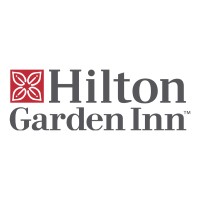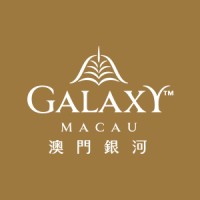
BCE Company Cyber Security Posture
bce.co.zaBCE Foodservice Equipment (Pty) is a leading supplier of kitchen utensils, industrial cookware and commercial kitchen appliances to the foodservice industry in Africa. BCE Foodservice Equipment was founded in 1987 and established a reputation for exceptional service and superior quality products. BCE has built on its reputation as Southern Africa’s leading supplier of kitchen utensils, industrial cookware and commercial kitchen appliances by expanding into the African Continent and Indian Ocean Islands. We carry a range of more than 6,000 products, all of which are best of breed and sourced from reputable local and international suppliers. Our products are classified into the following categories: • Heating • Processing • Refrigeration • Washing • Cleaning • Utilities and Smalls • Chefware • Display Ware & Buffetware • Hotelware • Glassware and Crockery • Storage and Handling Our head office is based in Johannesburg with branches in both Cape Town, Durban as well as a full showroom and warehouse in Lagos, Nigeria. In our Johannesburg branch we have the largest showroom of its kind in Africa, where potential buyers are able to view our product range in its unpacked state, replicating our product range found in our comprehensive catalogue.
BCE Company Details
bce
729 employees
8742.0
721
Hospitality
bce.co.za
Scan still pending
BCE_1759613
In-progress
Between 900 and 1000
This score is AI-generated and less favored by cyber insurers, who prefer the TPRM score.
 BCE Global Score
BCE Global Score.png)

BCE Company Scoring based on AI Models
| Model Name | Date | Description | Current Score Difference | Score |
|---|---|---|---|---|
| AVERAGE-Industry | 03-12-2025 | This score represents the average cybersecurity rating of companies already scanned within the same industry. It provides a benchmark to compare an individual company's security posture against its industry peers. | N/A | Between 900 and 1000 |
BCE Company Cyber Security News & History
| Entity | Type | Severity | Impact | Seen | Url ID | Details | View |
|---|
BCE Company Subsidiaries

BCE Foodservice Equipment (Pty) is a leading supplier of kitchen utensils, industrial cookware and commercial kitchen appliances to the foodservice industry in Africa. BCE Foodservice Equipment was founded in 1987 and established a reputation for exceptional service and superior quality products. BCE has built on its reputation as Southern Africa’s leading supplier of kitchen utensils, industrial cookware and commercial kitchen appliances by expanding into the African Continent and Indian Ocean Islands. We carry a range of more than 6,000 products, all of which are best of breed and sourced from reputable local and international suppliers. Our products are classified into the following categories: • Heating • Processing • Refrigeration • Washing • Cleaning • Utilities and Smalls • Chefware • Display Ware & Buffetware • Hotelware • Glassware and Crockery • Storage and Handling Our head office is based in Johannesburg with branches in both Cape Town, Durban as well as a full showroom and warehouse in Lagos, Nigeria. In our Johannesburg branch we have the largest showroom of its kind in Africa, where potential buyers are able to view our product range in its unpacked state, replicating our product range found in our comprehensive catalogue.
Access Data Using Our API

Get company history
.png)
BCE Cyber Security News
FCC Greenlights Bell Canada's $3.65B Ziply Fiber Deal
The Federal Communications Commission on Monday granted its approval to Canadian communications company BCE Inc.'s planned acquisition of ...
SSM supervisory priorities for 2023-2025
The growth outlook for the euro area has significantly deteriorated over the course of the year as a result of high inflation and the consequences of ...
Business Email Compromise | Federal Bureau of Investigation
Business email compromise (BEC) is one of the most financially damaging online crimes. It exploits the fact that most of us rely on email to conduct both our ...
Bell and Palo Alto Networks Form Strategic Partnership to Strengthen Security of Canadian Businesses Through Platformization
Bell Canada, Canada's largest communications company, and Palo Alto Networks (NASDAQ: PANW), the global cybersecurity leader, ...
Canadian telecoms monitoring networks amid massive cyberespionage campaign from China
A group of hackers known as Salt Typhoon is being blamed for the sprawling cybersecurity attack that gave Beijing access to the calls and texts ...
BCE's 8.3% Yield: A Telecom Giant Ready For A Comeback
Despite negative market sentiment, BCE is producing respectable results, with adjusted EBITDA growing by 2% YoY and margin rising by 130 basis ...
Comcast: Data Breach Affected 237,000 Broadband Customers
WASHINGTON, Oct. 8, 2024 - Comcast, the largest internet service provider in the U.S., disclosed a data breach on the computer systems of a ...
IT risk – ECB to roll out cyber incident reporting framework
As a key component of the financial ecosystem where money and valuable information are stored, banks have always been attractive targets for criminals.
Federal government condemns BC Ferries’ China deal
Controversy over BC Ferries' decision to award a contract to a Chinese state-owned shipyard to build four new vessels has reached Ottawa.

BCE Similar Companies

Hilton Garden Inn
Hilton Garden Inn® is an award-winning brand that provides business and leisure guests upscale, affordable accommodations and modern amenities for an experience that is simply on another level. The Hilton Garden Inn Promise affirms the brand’s goal to make each guest’s stay better and brighter. Guar

Galaxy Macau
Galaxy Macau™ is the World-Class Asian resort destination in Macau. Officially opened its Phase 1 on 15 May 2011, at an investment of HK$16.5 billion, Galaxy Macau includes more than 2,200 rooms, suites and villas across three World-Class Asian hotels: Banyan Tree Hotels and Resorts, Okura Hotels &

Carlson Hotels "Park Plaza, Chandigarh
A full-service, upper midscale hotel brand for business and leisure travelers, Park Plaza® offers award-winning meeting facilities and staff who live the brand’s value proposition by going out of their way to show their appreciation to their guests. Park Plaza® hotels are located in city centers

Fairmont Hotels & Resorts
Located in the heart of each destination we call home, a stay at any Fairmont hotel is truly unforgettable. Known for grand and awe-inspiring properties and thoughtful and engaging colleagues who aim to make each and every stay a cherished and memorable experience, we have been the stage for some of

IHG Hotels & Resorts
IHG Hotels & Resorts [LON:IHG, NYSE:IHG (ADRs)] is a global hospitality company, with a purpose to provide True Hospitality for Good. With a family of 19 hotel brands and IHG One Rewards, one of the world's largest hotel loyalty programmes, IHG has over 6,300 open hotels in more than 100 countries,

Meliá Hotels International
Welcome to Meliá Hotels International! From Mallorca to the world, our story is an exciting journey that began more than six decades ago and has led us to become one of the largest hotel chains on the planet and the most sustainable in Europe (S&P Global). With more than 400 hotels across the worl

Frequently Asked Questions
Explore insights on cybersecurity incidents, risk posture, and Rankiteo's assessments.
BCE CyberSecurity History Information
How many cyber incidents has BCE faced?
Total Incidents: According to Rankiteo, BCE has faced 0 incidents in the past.
What types of cybersecurity incidents have occurred at BCE?
Incident Types: The types of cybersecurity incidents that have occurred include .
Incident Details
What are the most common types of attacks the company has faced?
Additional Questions
What Do We Measure?
















Every week, Rankiteo analyzes billions of signals to give organizations a sharper, faster view of emerging risks. With deeper, more actionable intelligence at their fingertips, security teams can outpace threat actors, respond instantly to Zero-Day attacks, and dramatically shrink their risk exposure window.
These are some of the factors we use to calculate the overall score:
Identify exposed access points, detect misconfigured SSL certificates, and uncover vulnerabilities across the network infrastructure.
Gain visibility into the software components used within an organization to detect vulnerabilities, manage risk, and ensure supply chain security.
Monitor and manage all IT assets and their configurations to ensure accurate, real-time visibility across the company's technology environment.
Leverage real-time insights on active threats, malware campaigns, and emerging vulnerabilities to proactively defend against evolving cyberattacks.




